

1
Read some of our great articles on a range of parenting topics from sleeping to teething. We publish new blog posts regularly and feature a number of baby sleep experts and their top tips
Filter by tag:
Tags...Mar 04 2022
Posted by: SnoozeShade HQ
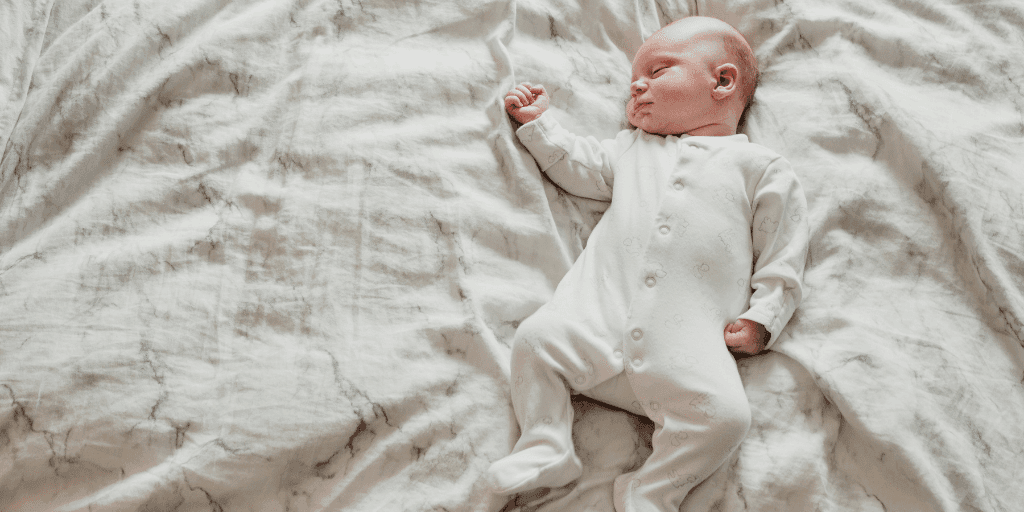
Sometimes naps are the best thing ever. One, two or maybe three glorious hours of peace, quiet and, most importantly, almost child-free time. Bliss! It’s no wonder parents look forward to baby nap time so much and why we’re so fiercely protective of it too!
What happens if your baby decides that nap time isn’t quite so important after all? What if there are more interesting things going on and they have a serious case of FOMO (fear of missing out)? Never fear. Here are three baby sleep problems solved and three top tips for better day time baby naps. Hope they help!
Problem one: my baby doesn’t nap for long enough
The dreaded short nap! Twenty minutes is just not enough time for you to get anything done and it also means that your baby isn’t getting enough sleep at all. So, what can do you? Quite a lot, actually.
First, make sure there is nothing obvious waking him. No loud noises, distractions or bright lights etc. Make sure room temperature is ok (you can get a baby room thermometer) and that your baby’s sleeping area isn’t too stimulating. For babies under four months, shorter and more frequent naps can be quite normal and as they get older, their nap routines and the length of time they nap will become more settled.
If your baby’s naps need lengthening, try this trick to make it happen:
This method takes some commitment, but after a few days your baby should move into the next sleep cycle by himself.
Problem two: I often miss my baby’s first nap of the day
It can be tricky getting everything done in time for your baby’s first nap, especially if you have other children but the first nap of the day is the most important, so don’t to skip it if you can. The first nap sets your baby up for the rest of the day and you can often predict how other naps will go, based on that first sleep alone. The key is to have a really good routine. This doesn’t mean you need to stay home every day so that your baby naps in his cot (unless you want to, of course!) because if you need to be out and about, you can take your SnoozeShade along and your baby can sleep wherever you are. The key thing is that you prioritise naps. An over-tired baby is a nightmare to get to sleep, and it can impact on your whole day – and your sanity!
Problem three: my baby doesn’t want to nap at all
Ah, nap refusal. Many parents have babies that just don’t want to nap and I really do feel for them. However, babies do need to nap and parents need that time, too. Hopefully these tips will help:
Jan 31 2022
Posted by: SnoozeShade HQ
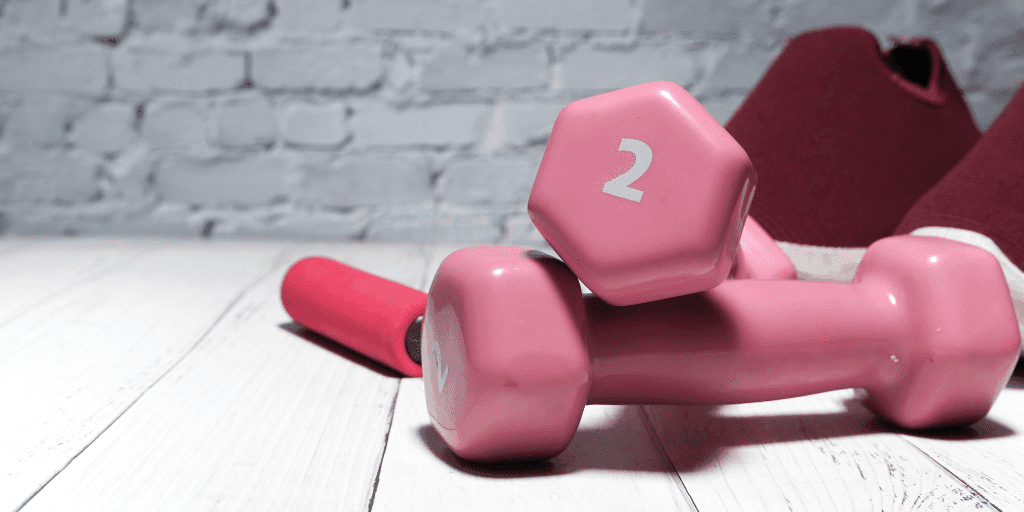
How to work out at home when you have just had a baby
Whether you were a committed athlete or a reluctant exerciser before you had your baby, once your little bundle of joy has arrived, it’s time to take your wellbeing in hand and get back to some activity. It can be difficult to find the time to join a gym or go to a class when you have a newborn, so here are some activities you can do at home to get you back in shape.
Before you get started
If you have had a normal delivery, you can start to exercise after the birth of your baby when you feel able. There’s no right or wrong time if you had a straightforward birth but do take it easy at first and don’t push yourself. If you had a more difficult delivery, or you needed stitches or a Caesarean, you should wait until after your six-week check-up before beginning any exercises, with the exception of gentle walks and a few stretches. Either way, you should leave more intense exercise like running until after six weeks.
Postpartum health
You want to get back to feeling like ‘you’ after the birth of your little one but do pay attention to some potential risks;
What to do and why
Before starting exercise, have a serious think about what you enjoy and how you are going to fit it into your day. This is where nap time can be your friend! In the morning, get you and your baby up and dressed and go about your usual morning routine – but think about putting on your active wear when you get up. That way, as soon as your baby goes down for their first nap of the day, you can quickly take a little exercise break.
Targeted exercises
Here are some moves you can do anytime to target specific areas of the body. Try to include as many as you can, starting with just a few repeats and building up as you go along.
Deep breathing with abdominal crunches
It sounds a bit scary but don’t worry – this exercise is easy to do, can be done in your bed or on a sofa and starts the process of healing and strengthening your stomach and pelvic floor muscles. Sit comfortably – you may find sitting cross-legged is best – and slowly take in a deep breath through your nose. Then think about your tummy muscles and pull them in towards your spine from your pubic bone to the rib cage as you breathe out fiercely. Increase both the number of times you do this and the length of time you hold your muscles as you go along.
Crunches
First, it’s very important to protect your back, so lie on the floor with knees bent and flatten your spine down to the mat so there is no gap. Then, engaging your tummy muscles, exhale, then lift both head and bent legs from the mat for a few seconds, then replace as you inhale. As you get stronger, lift your shoulders too.
Pelvic floor toner
It’s important to get that pelvic floor back to full strength, so this one is ideal for new moms. Kneel on the floor with your arms straight down from your shoulders, shins on the floor. Relax your back, then exhale as you pull your bottom under and in, tilting your pelvis up and rotating your abdomen – your pubic bone should go upwards. Exhale and return to the previous position.
Kegels
As we’re talking about the pelvic floor muscles, do you know where they are? Think about when you are going for a pee – try to stop the flow of urine by tensing your muscles and bingo – those are your pelvic floor muscles! Once you have located them, you can exercise them every day to get them strong and prevent urinary incontinence. While sitting on a bed or chair, engage these muscles and squeeze and hold them. Try to do this ten times and repeat several times per day.
Bridge
Lie on the floor with knees bent and arms loosely to the sides. Start to raise your bottom from the mat (make sure your back is flat on the floor) gradually, one vertebra at a time until you have just shoulders and feet on the mat. This is great for spine mobility, your legs, core and butt.
Opposite arm and leg reach
Kneeling with hands below shoulders and knees below hips, engage your core muscles and then slowly extend one arm to the front and the opposite leg to the back. Keep everything else completely still! Slowly return them, then swap sides. Try twenty and do more as you improve.
Arm toners
Do repeats of these arms movements to blitz the dreaded bingo wings. With a set of small hand-held weights like these stand with your arms out to your sides. Move your arms in small circles first towards the front, then towards the back. With your arm extended in front, curl your hands in towards your shoulders. Stretch both hands behind you, palms up with arms straight and raise and lower your hands. Place hands straight out to sides, the raise to a clap above your head and lower. Place arms together in front, as if diving, then take elbow out to the side as if rowing. Stretch hands straight out in front, palms up, then touch both hands to shoulders. Repeat each of these ten times.
Full body exercises
Yoga
Yoga’s exercise, breath and posture moves are ideal for helping keep your body and limbs supple. You can also strengthen and stretch muscles that have had to adjust to the extra baby weight you have been carrying. Yoga helps with relaxation and includes meditative breathing techniques in addition to being a good all-body exercise. Look for a local teacher who is offering online classes – ideal, as when you’re ready, you can go along to in-person classes, which will help you gain a group of friends too. Alternatively, find a good online class that offers ten-minute session for new moms. You can even do it with your baby beside you! Invest in a good pair of yoga pants to keep you flexible and give your body some support such as these.
Pilates
Pilates uses similar techniques to yoga and was developed to help ballet dancers heal from injury. It aims to help your body get stronger, with an emphasis on your core muscles which is ideal for post-partum mums. Again, an online or local teacher who is experienced with new mums will be your best bet. All you need is a good mat like this sustainable one.
Are you a fan of Dancing With The Stars? There’s a dance style to suit everyone, from disco to street dance, from tango to salsa. If you have danced before pregnancy, you can just carry on, as it’s ideal for your whole body. Dancing helps you maintain and build muscle tone all over and you can focus on crunching your tummy area to help tone it. Put on a music video like this one, the radio or an online dance class and get moving. Babies love dancing too, so you can do this with your baby beside you and you can take your baby to dance classes when they can toddle.
HIIT
If you’ve not heard of this before, High Intensity Interval Training is a method of exercise that can be completed in a very short period of time and that is, as the name suggests, intense! It’s also great for fitting into your busy day. A good beginners’ HIIT routine would be a minute each of; jogging gently on the spot, star jumps, squats and fast running, with a short period of recovery between each activity. Want to extend the routine? Add sit-to-stand, standing calf raises and knee bends, seated leg kicks, lunges, push-ups and planks.
Jan 27 2022
Posted by: SnoozeShade HQ
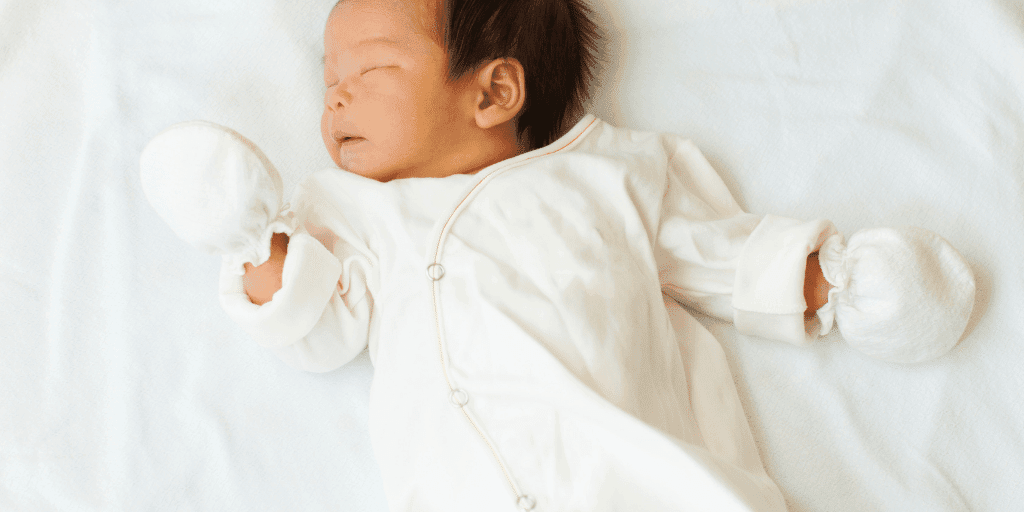
As a new parent, you may find that you worry about your baby – and that’s completely normal. Most of us have, at some time or another, hung over the crib to make sure our little one is sleeping soundly and is neither too hot nor too cold.
Baby sleeping sacks were invented for just this purpose – to keep your baby at just the right temperature when they are sleeping, no matter how warm or cool the room is.
Sleeping sacks are a great alternative to sheets and blankets. Not only do you know exactly how warm the sack is, they are also easy to use and prevent overheating, a major factor in Sudden Infant Death Syndrome (SIDS). Read more information on baby sleep safety and cot death from Kids Health here.
Baby sleeping sacks come in a range of TOG ratings – that’s an indication of how warm they are – to suit different times of the year.
2.5 TOG – the warmest sack, perfect for winter
1 TOG – a good all-rounder, this is perfect for spring and autumn
0.5 TOG – this is all you need for warmer summer days
Under the sack your baby should wear a nappy and a long-sleeved top, such as a thin cotton vest top. You can add another layer if it’s getting colder. When you buy the sack, check what additional clothing the manufacturer suggests.
Make sure the sleeping sack fits your baby properly. The top part, around the chest and shoulders, should fit snugly and your child’s head should not be able to fit through the neck opening. The arm holes should also be snug. Many sacks have adjustable openings to help you get a good fit and to enable the sack to grow with your child. The bottom part of the sack should go down well past your baby’s feet and have plenty of leg-kicking room.
Make sure you invest in a room thermometer for the nursery like this one or buy a baby monitor such as this model that displays the temperature as one of its functions. You’ll always know how warm the room is, and therefore the best sack to put your baby in.
When buying, look for additional features such as sacks that grow with your baby, clever opening to help with night time diaper changes, cute designs that match your décor and soft interior linings. Most of the brands listed here have sacks in several TOG ratings, so once you love a brand, you can stock up on sacks for all seasons. Hypoallergenic and sustainable fabrics are a bonus.
Weight: 0.5, 1.5 and 2.5 TOG
Sizes: this bag fits from 4kgs to 2 years
This clever sack is designed to be used from your baby’s early days right up to their second birthday, making it great value for money. The fitted neck and armholes make for a snug fit, with no danger of it slipping over your baby’s head and the organic cotton and bamboo fabric is soft against your little one’s skin. The fabric is both breathable and regulates temperature, so that your little one is always at the right temperature for both sleep safety and a good night’s sleep. There’s even a stroller belt opening, meaning you can pop the sack on if you’re out past baby’s bedtime, then simply transfer them into their cot without waking them. The zip opens both ends for easy diaper changes and the shoulders have popper openings for ease of dressing. It can be machine washed at 300C.
Weight: ergoBaby offers three weights; light, which is similar to a 0.5 TOG, mid-weight which is like a 1 TOG and cosy which equates to a 2.5 Tog bag,
Sizes: 0-6 months
A great, machine washable sack to use when transitioning from swaddling, this comes in lots of sweet patterns and is made from super soft 100% cotton, that makes it ideal to use against your baby’s delicate skin. The bag unzips from the bottom when you want to change your little one and it fits snugly around the shoulders and chest. It has adjustable shoulder fastenings so that you can lengthen them as your baby gets bigger and there’s a belt slit that allows you to strap your little one into a stroller or car seat when wearing the bag. This makes it good for travelling with your baby.

Weight: 1, 2.5 TOG
Sizes: 6-18, 18-36 months
Gro was one of the very first sleeping sacks on the market and they still offer great sleep products at good prices. They are made from machine washable, extra soft bamboo fabric with recycled wadding and a lining called Aloekind, which is cotton infused with aloe vera that has naturally skin-soothing properties. They are well fitted on the chest and shoulders for safety and comfort and have a generous leg section to allow for those kicking little legs to move freely. The zip opens along the side and then under the bottom of the bag to allow for quick and easy nappy changes.

Weight: 1 TOG
Sizes: 0-3, 3-6, 6-12 months
This super soft jersey sack is made from a GOTS-certified breathable organic cotton and bamboo and is suitable for loose swaddling when the poppers on the armholes are fastened. It has a slim fit through the body, with plenty of hip and leg room and the zip fastening runs all the way from the neck to the bottom of the bag and can be undone from either end, making it easy to change your baby’s diaper at night. The bag is endorsed by the National Eczema Association as a skin-friendly bag and it is easy to care for, with a gentle cold wash.
Love To Dream Swaddle Up Transition Bag

Weight: 1 TOG
Sizes: 3-6 months
If you’ve swaddled your baby from birth or used one of Love To Dream’s swaddle bags, you’ll need something to help your baby transition from having their arms inside the swaddle to having them free. This is the perfect transition, as you can put your baby inside the sack with their arms up, a very natural and comfortable position for babies that helps reduce the startle reflex, then take off the arm pouches when your baby is a little older, can roll over and needs more freedom of movement. The two-way zip means that diapers can be changed effortlessly and the bag is hip-healthy. It can be washed and dried in the machine.

Weight: 2.5 TOG
Sizes: 3-9, 9-18 months
This award-winning sack comes with detachable sleeves that allow you to use this in several seasons without having to buy more bags. They can be used for room temperatures between 58 to 680C, making them versatile and they come in plenty of pretty prints that will suit any nursery décor. They have mesh panels to allow for ventilation, ensuring your baby does not get too hot and they have a hypoallergenic, sustainable filling and the outer, machine washable and dryable fabric contains Dupont Sorona, made from 37% plant-based ingredients and is Oeko-Tex 100 Class 1 Certified, a measure for organic fabrics.
Further Reading:
Safe Baby Sleep in Winter
What Should My Baby Wear in Bed?
Why Your Child Does NOT Need a Coat in the Car
Jan 26 2022
Posted by: SnoozeShade HQ
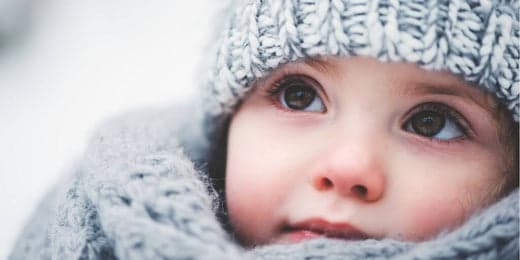
Don’t pack away your SnoozeShade just because the sun isn’t making much of an appearance. During the Fall and Winter months, there are more reasons than ever to keep your SnoozeShade under the stroller, ready for action wherever you go.
As described in this post, SnoozeShade continues to be an essential baby item when the temperatures drop and we leave summer behind. The benefits of using SnoozeShade include:
It’s common sense to be in tune with your instincts when it comes to using SnoozeShade during the winter months. SnoozeShade will provide light shelter for your little one but it’s not a replacement for adequate layers when it’s really cold. The following guidelines may be useful if you’re unsure:
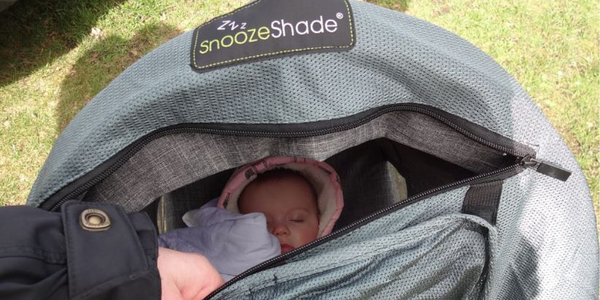
Being outdoors has proven benefits for both parent and child. A good dose of vitamin D and some fresh air does wonders for emotional wellbeing and will get the heart pumping too – so don’t be tempted to skip your daily walk just because the sun isn’t shining. And don’t forget that fresh air helps to promote a good night’s sleep for baby too!
Further Reading:
Using Your SnoozeShade After Summer
A SnoozeShade Is For Life, Not Just For Summer
Can My Baby Nap Safely Outdoors
Dec 03 2021
Posted by: SnoozeShade HQ

The holidays are here, you’re excited to see relatives and they are keen to meet your new baby. Though that all sounds wonderful on paper, the reality of parties and family visits at this time of year can actually have a detrimental effect on your baby’s sleep patterns. If you have only just got your baby used to a sleep routine, time spent away from home visiting friends and loved ones over the festive season can totally disrupt this.
Here are some ways to make sure your baby sleeps properly over the holiday period.
Babies need naps as much as they need their sleep at night, so try to make sure that you stick with your nap schedule as much as you can. Of course, it won’t matter if occasionally your baby has a later nap or they stay up a little late but routine can really help make sure that your baby doesn’t get too over-excited. That leads to bad nights for all.
We know that all the relatives will be excited to meet the new baby but make sure you choose family meetings and parties wisely. You’ll both be tired and your baby can easily get over stimulated by being passed from person to person. Make some rules (it’s good to rope in a strong family member – perhaps your mom or a sibling) who will reinforce your sleep routine and discourage other friends and family members from wanted to ‘just peep in on’ your baby or play when them when they really need a feed or a nap.
Place a SnoozeShade on your stroller and people will know that your baby is sleeping – it even has a little sign to deter people from disturbing your little one.
You can also use a SnoozeShade over a pack ‘n’ play if you are staying away from home, keeping your child’s sleep environment calm and dark. This is great is you are sharing a room with your baby, as you can put them down for a nap or for night time and not disturb them when you come to bed.
If you are going out to a restaurant for a meal, taking the stroller and SnoozeShade will mean you can let your baby sleep while the others are enjoying the meal.

Even if you are away from home, or you are with friends at your own house, try to make sure that at least one nap per day is in a familiar place – so that could be their own crib, their pack ‘n’ play with a SnoozeShade over it to keep it dark and quiet or a stroller, also with a SnoozeShade. Make sure you pack some favourite toys and books that you would usually use in your baby’s bedtime routine, and of course their familiar pyjamas or sleeping bag.
You know your own baby better than anyone else, so keep an eye on them and watch out for sleep cues. These include pulling the ears, rubbing the eyes, getting unsettled and grumpy. If you spot these signs, take your baby into a quiet room, give them a feed and a diaper change and settle them down for a sleep. You usually have 10-15 minutes from when your baby starts to show these signs to when they become really overtired and grumpy. If your baby prefers motion for sleep, take a stroll with your baby in the stroller with the SnoozeShade over it or have a drive with a SnoozeShade for the infant carrier.
The time a new baby is awake is very short in the early days, so to ensure the most important people get some quality time with your baby, rope them into their everyday routine. One friend or relative can give your little one a feed, another can read them a bedtime story and they can even get involved with bath times and nappy changes – well, they wanted to be helpful!
If you are heading to a relative’s, or back home, try to have the journey coincide with nap times, as many babies like to sleep in the car. Change them into their night clothes before heading home.
If your baby’s sleep patterns do get disrupted over the festive season, don’t worry too much. You can get back on track once you are back home and back in your normal daily routine. After all, it’s better that the whole family gets to meet and love your precious new baby!
Further Reading:
Going Away with Babies and Toddlers at Christmas
Nine Tips to Help Cope with Visitors with a Baby
Three Tips for Dealing with an Over-Tired Baby at Christmas
Nov 22 2021
Posted by: SnoozeShade HQ

The main difference is that travel cribs fold up small, are compact (some fit in their own backpack or in a plane’s overhead locker) and are much lighter than a standard PNP. They are designed to be super portable making them easier to take with you on vacation.
Pack ‘n plays on the other hand are portable but they tend to be larger, clunkier and more cumbersome.
What can I use a travel crib for?
The short answer is – whatever you’d use a normal pack’n’play for.
Travel cribs are useful for when you’re staying with friends and family and need a cosy place for your little one to snooze.
It can be because you just feel more comfortable knowing baby is in a safe sleep space that you’ve already done the research on and approved for use with your little one (versus borrowing an unknown one).
They can also be used as a place for baby to play without you having to worry about baby exploring an unknown home or hotel room (which can lead to little fingers being stuck in sockets or banged heads on glass surfaces).
Travel cribs generally accommodate newborns to toddlers about three years old.
The top 3 most popular travel cribs we see our customers using are (and the good news is that SnoozeShade for Pack’n’Plays fits them all):
Phil & Teds Traveller Travel Crib
And a new travel playard has arrived which we love for its ease and speed at putting together and pulling apart… drumroll for the
Safety first: When using your travel crib, make sure you only use sheets recommended by the manufacturer. Do not use regular crib sheets on a smaller mattress as you could end up with loose fabric and that can be a suffocation hazard. As always, it’s advised not to leave things in baby’s sleeping area. No bumpers, quilts or blankets, and make sure to pull out any toys and stuffed animals at bedtime.
Nov 19 2021
Posted by: SnoozeShade HQ

When you’re a new parent, you will discover that everyone has an opinion about your baby and how you are coping – and more often than not they are not afraid to share it! Sleep seems to be one of those areas where other people can’t wait to tell you how it should be done, or how they did it. But how do you work out what is good advice and what is just a myth? We take you through the best and the worst of the sleep tips.
One: When your baby goes to sleep, you should sleep too.
Sounds amazing, right? If you look at how much sleep a baby needs you’ll see that newborns sleep almost all the time. Result! That means it’s no problems for you to bet some shut-eye – right? Well, it’s not as simple as that.
The problem is that babies usually only sleep for very short spaces of time, which means that just as you are getting ready for a nap, they wake up again. Then you have to do the whole routine of feeding, changing again. Then you put them down to sleep again, have a wash, put a load of laundry on, maybe sterilise the breast pump – and they’re awake yet again! But don’t despair, there are ways you can manage a nap or two:
Get help: if your partner is an early riser, enlist him to feed baby with an expressed bottle while you have a lie-in. If you have a friend, or maybe a parent, who will take the baby for a walk in the park, you could take some time out in the afternoon. Try not to use the time catching up on chores in the early days – the baby won’t mind if the house isn’t pristine!
Once your baby gets a bit older, their sleep patterns will become more predictable and eventually they will sleep through the night, so your sleep patterns will improve.
Two: Keep your baby awake during the day so they will sleep more at night.
This one is a definite myth! Babies need those daytime naps right up to around three years. Babies getting overtired can cause them to have the very worst melt-down imaginable. Not to mention that a baby who has been awake much of the day is overstimulated, so will find it hard to get to sleep at night and will probably wake up in the early hours. The better quality the daytime naps. the better their night time sleep will be.
Three: You should not offer a ‘dream feed’.
A ‘dream feed’ can work for many babies so it IS worth a try. Generally any advice not to disturb baby once they have been put to bed is good advice, but there is one exception – the Dream Feed. This trick for getting better sleep for yourself is to give your baby a late evening sleep at the point when you want to go to bed. So, you’ve put your baby to bed at 7pm, had dinner, watched a bit of TV and now you’re ready for bed? Lift your baby out of their crib, offer a feed and then pop them back in. This works well for very young babies and also for those whose routine has been upset for any reason – teething, illness and so on. If you think about how tiny a new-born’s stomach is and you’ll see why they can’t go more than a couple of hours without a feed. You can also ask your partner to do a late feed or a night feed with a bottle of expressed milk, once you have well established breastfeeding which will give you a chance to get an early night and recoup some sleep if you feel you need to!
Four: Putting a baby to bed late will mean they sleep longer in the morning.
This doesn’t really work, as babies need a lot of good quality sleep. Keeping them up late or past their usual night time will probably have the effect of overtiring them and harm their sleep routine. Having said that, some babies do have a natural preference for their sleeping times. While some babies will be early risers, others seem to like to sleep until later, just like we as adults do! Once you have got a bit more used to your baby and to their routines, you’ll get an idea of what they like and dislike and can fit your sleep patterns in around them.
Five: Weaning early makes your baby sleep through.
This advice is not inline with guidance from the World Health Organisation and the NHS, who says you should start to wean at six months. Earlier is not advised due to several things:
Some people will tell you to put rice in a bottle of milk or offer a few spoons of food at night but there are good reasons why the six-month stage is suggested. There are some conditions where early weaning might be advised, so speak to your health visitor.
Six: Formula fed babies sleep better than breastfed babies.
This one is definitely a myth. There are reasons why babies sleep well, or don’t; why they might sometimes be unsettled and why they sometimes surprise you by suddenly sleeping through but the way they are fed in not one of them. Establish a good routine, make sure you teach them how to self-settle and all will be well, sooner or later.
Seven: If your first baby isn’t a good sleeper, neither will your next one be
This is a myth, as each child is different. That might mean that your first child is a poor sleeper and then a subsequent one is really well settled. Some put that down to the fact that you are now more experienced as a mother and though some of that might be true, it really is just the case that each child is unique. Some parents have a first child who sleeps well and then are sideswiped by a second who will not settle, no matter what. It may also be true that a first child will get more attention because you’re worried by every tiny sound they make and will pick them up even if they might have settled themselves back to sleep. Don’t compare your children.
Eight: Babies sleep better once they pass the next milestone.
You may be told that your child will sleep better once they are crawling. Or walking. Or weaning. Unfortunately, these milestones may also be accompanied by teething, separation anxiety or another set-back. Whilst it is true that exercise will help them sleep, the fact is that babies gradually settle into a routine and will get better and better at sticking to it – as long as you do.
Nine: Colic stops at three months.
Colic, which is still not fully understood, seems to be a problem where the upper muscle of the stomach is not fully developed and allows some of the gastric acid back into the oesophagus. This stings and burns and babies can be made very unhappy by it and cry for hours at a time. Of course these symptoms won’t just stop at three months. Your baby may also be suffering from trapped wind or digestive problems such as an allergy to something you’re eating, also reflux or CMPA which you will need to see a paediatrician or gastroenterologist about. Don’t just ‘wait for it to get better.’
Ten: You need a strict routine which means you can never leave the house at nap time
No! The aim is to establish certain over-arching routines and sleep patterns while also bringing your baby into your life and family. Some writers suggest routines where every element of every day is planned and you can’t deviate from them – try avoid this! You need to be able to go out, to take your baby to play classes, swimming and to meet people. You must have times when you go to the shops, to cafés and restaurants and to visit friends and family. Part of the reason SnoozeShade was invented was to help babies sleep on the go, right from birth. So, don’t worry if some days, your entire day is spontaneous – but do try to have some sense of a nap and bedtime routine generally across a week. Above all, have fun with your little one!
Nov 17 2021
Posted by: SnoozeShade HQ

We have an internal clock, also known as the Circadian Rhythm, which helps us feel awake during the day and sleepy at night time. Serotonin, the awake hormone, is produced during the day and Melatonin, the sleep hormone, is produced at night time, setting us up for sleep.
Maternal melatonin allows babies to fall asleep anywhere quite easily, until around 3 weeks old, as the melatonin that comes from the placenta is quite high. This melatonin slowly decreases until they start producing their own melatonin, around 8 weeks old. Did you notice that when your baby hit that 8 week mark, that they started catnapping, were more alert and harder to get to sleep on the go? That’s because the high amount of maternal melatonin has now disappeared and they are now producing their own melatonin.
Now it’s time to shed some light on Serotonin, the awake and happy hormone. Serotonin is actually converted into melatonin and supports sleep. Serotonin is produced from light and signals to the brain that it is time to wake up. The aim is to have a good balance of both melatonin and serotonin hormones, as they work together to allow your child to sleep well.
How can you help your child produce serotonin? You can open the blinds during the day to let in natural light, safe exposure to sunlight each day, you can go for a walk in the pram, have morning or afternoon tea on the lawn in the backyard or go for a walk and play in the park.
Any light from the sun or artificial light from lamps, technology etc affects the readiness for sleep, as light produces serotonin and blocks melatonin production. Have you noticed that your child does not sleep as well or is difficult to settle to sleep in a light environment? When your child is in a dark room, melatonin is produced by the Pineal Gland, which makes it much easier for your child to fall asleep, stay asleep, learn to link sleep cycles and have consolidated and restorative sleep.
I don’t recommend any night lights until over the age of 2 years old, when some toddlers may have a genuine fear of the dark. If your toddler develops a fear of the dark and you need to provide a night light, I recommend a red light that is as dim as possible and in the corner of the room out of direct sight. I recommend the room being as dark as possible for all naps, overnight and especially when the sun rises.
When it’s time for your child to have a nap, you want their room to be as dark as possible, as this allows serotonin to be converted to melatonin, which will help your little one get ready for sleep, fall asleep and stay asleep.

Rachel Thompson is a certified Baby Sleep Consultant based in Australia but offering her services worldwide.
My journey of becoming a new mum is by far the best life experience and is incredibly rewarding, but it can also be a rollercoaster with many challenges, running emotions and sleep deprivation just adds to it… I myself have experienced the depths of sleep deprivation and I know the impact it can have on all aspects of your life. I wanted to help our son develop healthy sleep habits while he was young, and well into the future as he grows. My sleep deprivation actually inspired me to want to become an Infant and Child Sleep Consultant, because I love science, so learning all about sleep was fascinating. I am passionate about helping other families around the world get quality sleep and learn the invaluable skill of sleep.
Find out more about the services Rachel offers on her website Rockabye Baby Sleep Solutions, and follow her for great tips and advice on Instagram.
Nov 02 2021
Posted by: SnoozeShade HQ

Clocks changing? Don’t “Fall Back” into Early Mornings! There is something even scarier than Hallowe’en… the dreaded “Fall Back” time change, when the clocks go back by an hour. Eek! This means parents of young children suddenly have early risers on their hands, as the 6am wake-up suddenly becomes 5am. Gasp!
Here are two options to help manage the time change:
This one is good for all the planners out there. Start shifting your child’s schedule 4 days before the time change, and adjust by 15 minutes each day. For example, if bedtime is regularly 7pm, then bump to 7:15pm, then 7:30pm, 7:45pm and finally to 8pm. This way when the time shift happens, their bedtime reverts back to the regular 7pm.
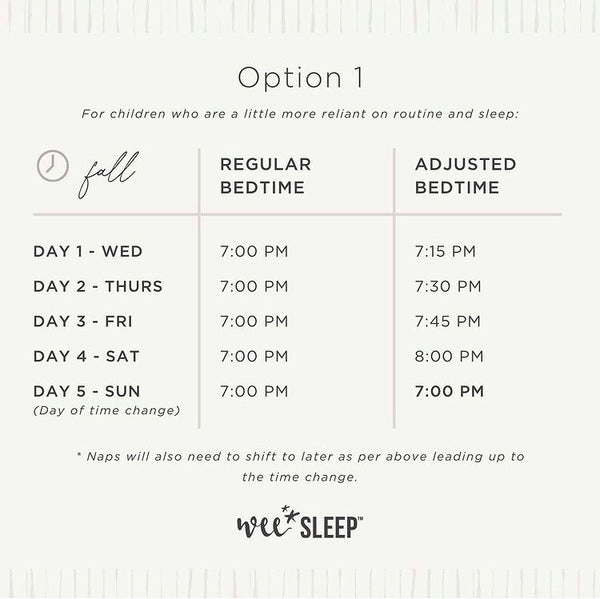
While you are making the transition, you will likely find your child wakes up at their regular time (circadian rhythm stuff). That’s okay – give them a bit more time in their crib/bed before you get them up for the day. It will to take some time to shift their internal wake-up time.
This option will probably work better for toddlers and older children who are able to tolerate a bit more ‘stretch’ to their awake times than infants can. It is also great if you are reading this and the time change has already happened (I’ve got you)!

In this case when time change happens, you are going to bump their bedtime by 30 minutes for the first few days (e.g. Sunday, Monday, Tuesday). For example, if bedtime is normally 7pm, then put them down at 6:30pm. On Wednesday, just go back to the regular schedule with bedtime at 7pm.
If you are still experiencing early morning wakings a week after the time change, don’t hesitate to book a complimentary 15 minute phone call with Cara for some advice and insights on sleep!
Cara Myre is a Senior Sleep Consultant with WeeSleep who helps tired families across the globe. Visit www.wee-sleep.com to book your free 15 minute phone consultation and follow her on Instagram for regular tips on sleep.
Oct 06 2021
Posted by: SnoozeShade HQ
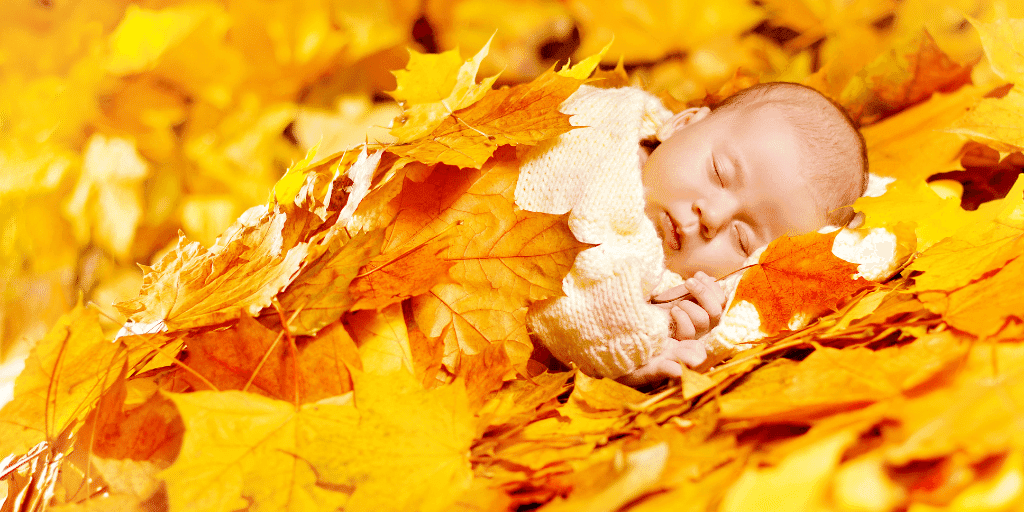
Here are four tips from Cara at Wee Sleep to help you achieve sweet slumber for your infants over Thanksgiving weekend when you’re visiting family and friends…
Children love consistency and having predictability to their days. Help them understand what to expect around sleep by packing their favourite bedtime items. If you are staying at a relative’s home or a hotel, bring your child’s favourite bedtime items, like their special snuggly buddy, noise machine and sleep sack. These familiar sleep objects will provide comfort in a new place. For older children, show them around the room where they will be sleeping in before it is time for a nap or bedtime, and bring along a favourite night light. This will make sleep go much smoother for everyone.
Naps during the day or an early evening bedtime can be tricky when there is lots of light in the room your child is sleeping. SnoozeShade’s portable cover for your baby’s pack n’ play provides a darkened, distraction-free sleep environment. It weighs just 2 lbs and is small enough to pop into your suitcase without taking up much room (so you have space to pack your stretchy pants for after Thanksgiving dinner!). Enjoy 10% off with code WEESLEEPCARA.
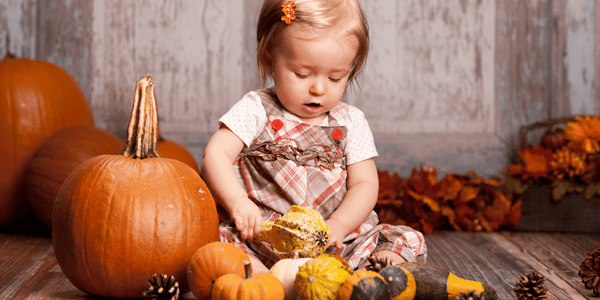
While high chair naps may make for cute photo ops, your child won’t enjoy dozing off into their mashed potatoes. Resist the temptation to skip naps at Grandma’s – overtired kids get really cranky, and when the kids are grouchy, so is mama! It is okay if the timing of naps stray off their regular schedule a bit, this is bound to happen. You can make up for it the next day or upon returning home to help them catch up on ZZZ’s.
Try your best to honour their bedtime routine, especially after a very stimulating day with relatives. A 20-30 minute routine starting with a warm facecloth wipe-down, and a familiar book and song, will help your child’s mind and body to wind down and prepare for a full night of rest.
Still have questions or concerns about sleep? Cara Myre is a Senior Sleep Consultant with WeeSleep who helps tired families across the globe. Visit www.wee-sleep.com to book your free 15 minute phone consultation and follow her on Instagram for regular tips on sleep.
Further Reading:
Using Your SnoozeShade in the Fall
Using Your SnoozeShade in Cooler Weather
Using SnoozeShade After Summer

© 2025- SnoozeShade | All rights reserved